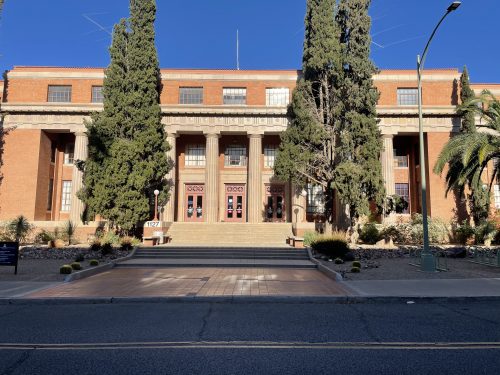By Bradley Anderson / El Inde
Jeong Yeol Yoon is a professor and president of the Department of Biomedical Engineering at the University of Arizona. Originally from Seoul, South Korea, he studied biomedical engineering in Los Angeles at UCLA, working on lab-on-a-chip and biomaterials and then finding his way to Tucson where he furthered his dedication to research. He has done this by teaching multiple lab and research courses at the university, as well as publishing a number of articles and books over the years directly related to his studies.
Yoon recently published the book, Smartphone Based Medical Diagnostics —the first of its kind exploring smartphone diagnostics, applications with electrochemical detection that have the ability to diagnose someone with an illness. The book also addresses the commercial challenges faced when trying to incorporate smartphone-based diagnostics. The idea may still be foreign to many, however, with Covid-19 still spreading, smartphone-based diagnostics may be approaching the masses very soon.
The Coronavirus that changed the world in December 2019, has resulted in nearly 2.5 million deaths worldwide. There have been nearly 17,000 cases resulting in death in the state of Arizona alone. Given all this, Yoon’s book became a blueprint for his team of researchers and students with one common goal in mind: A smartphone application that can quickly produce Covid-19 results.
The idea is to use a wax-coated sheet of paper to analyze your saliva through your smartphone. By involving the smartphone-based diagnostics technology, Yoon and his team discovered that under a microscope, one can detect if the coronavirus is present. If the person is found to be Covid-19 positive, the saliva sample will show antibodies attached to each pathogen particle.
With Yoon’s device, nothing needs to be jammed up people’s noses, a change that makes people more willing to participate in getting tested. There is also the comfort of being able to test yourself, at home. Testing centers can be stressful environments, where people are fearful of getting sick. At a cost of about $45, Yoon’s test is cheaper than many other tests available. Not only is this device easier to use and more accessible, but participants aren’t subjected to long testing lines.
The test is also much faster with results coming back in within 10 to 15 minutes.
Yoon works hand in hand with fellow researcher Pat Akarapidad, whom Yoon describes as the “outreach person in my lab for Covid-19.”
According to Akarapidad, the process of creating the smartphone application has been difficult due to the number of parts needed for it to work. “There are many parts in this project that eventually will be combined to complete the process, including microfluidic chip design, device design, assay optimization, detection software development, analysis software module, and graphic user interface,” Akarapidad said. So many things must go right in order for this application to be successful and Yoon’s team has faced challenge after challenge as the pandemic has grown.
The fact that Yoon and Akarapidad have been collaborating on this app without a computer science expert in the room has made it more challenging. “We have to do a lot of research and try different options, and we failed a lot before succeeding in a small step,” Akarapidad said.
Building this device was not easy. Katie Sosnowski, a graduate research assistant who’s a part of Yoon’s team, has been intimately familiar with its creation process. Sosnowski worked as an intern in the field for years, but was still surprised by how quickly changes could impact the project as a whole. “Since we are creating a device essentially from scratch, it is difficult to change gears almost every week when we realize something isn’t working out. For example, we may have to change a chemical or re-print a device component, and then completely redo our data collection because the results will be different and not comparable to prior results,” she said.
During the process, Sosnowski struggled with the fact that every part of their data lives parallel with the idea of itself. Since the idea is being created from scratch, if there is a problem in the latter part of the process, the team must start from the beginning to avoid future problems.
Despite the challenges, Sosnowski said this was a very rewarding experience for herself and for her colleagues. “It was definitely rewarding to get so much attention from (University of Arizona) President Robert Robbins and others at the university who are excited that these devices could actually be deployed on campus. With research, it is rare to have the opportunity to work on something that an end-user could actually benefit directly from, but this particular project does have that potential. It’s also so rewarding and wonderful to spend time with my coworkers working through challenges we’ve had with device optimization and enjoying those “Aha!” moments together.”
As time goes on and the pandemic evolves, the goal is now shifted towards testing. University of Arizona students will have the option to sign on and test this device. The ultimate goal for this program, according to researchers, is to make it accessible and put it in the hands of big groups like campus resident assistants in the dorms, who will be able to test a large quantity of people in a shorter amount of time.

where the biomedical engineering team does a lot of their research.
Photo by Bradley Anderson / El Inde.
